
© Sidd Khajuria 2013. Courtesy of Barbican Art Gallery. (Click image for larger version)
Richard Alston Dance Company
Cunningham at The Bride & the Bachelors
A Merce Cunningham Choreographic Event, part of Dancing Around Duchamp season
London, Barbican Gallery
29 May 2013
www.richardalstondance.com
www.barbican.org.uk
The Barbican exhibition dedicated to Marcel Duchamp and his influence on American artists has a notable gap at its centre – Merce Cunningham. He is nowhere near as well represented as his erstwhile colleagues, John Cage, Robert Rauschenberg and Jasper Johns. Their art and artifacts are mostly tangible, capable of display, while Cage’s compositions are part of the exhibition’s ‘soundscape’. Although Cunningham’s choreography exists only in performance, the curators could have included videos of Merce dancing in his own works.
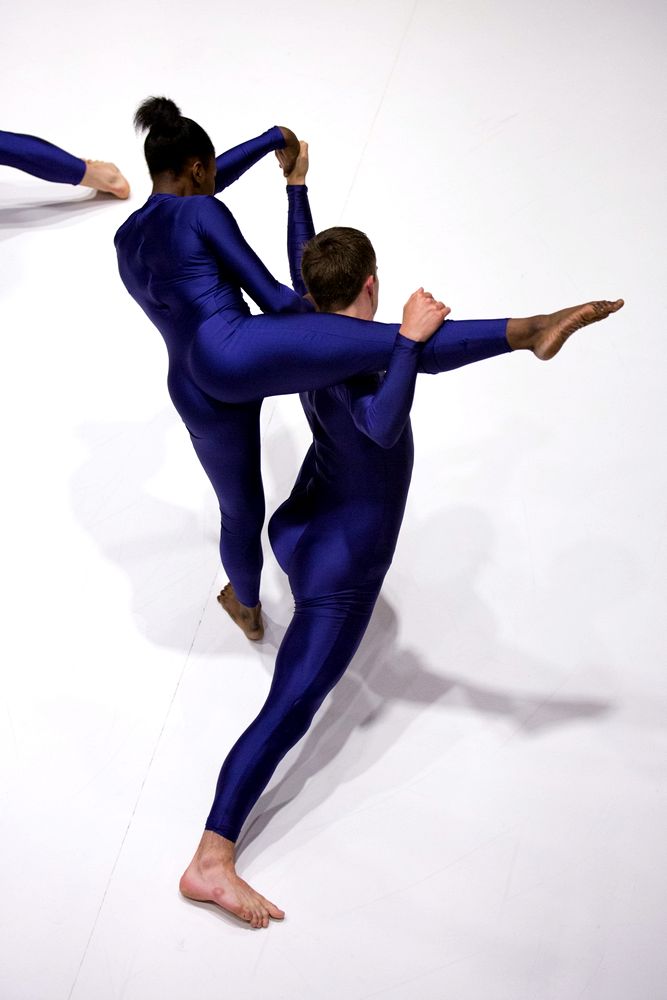
© Sidd Khajuria 2013. Courtesy of Barbican Art Gallery. (Click image for larger version)
Instead, they invited dancers to perform on various occasions on a small raised stage in the the gallery. (Charles Atlas’s films of Cunningham works were shown, briefly, in the Barbican cinema and Tate Modern’s tanks). Cunningham’s own company no longer exists, so the gallery performers were at one remove – at the very least – from the choreography’s source. Most were students, appearing on Thursdays and weekends. Rambert Dance Company were invited to perform Cunningham’s Rain Forest, which is in their repertoire, twice: the second performance is on Wednesday, 5 June. Richard Alston Dance Company gave a one-off version of a Cunningham Event, taught by Jeannie Steele, who danced with Merce’s company for 16 years.
Richard Alston talking about Merce Cunningham and performing his work.
The Event format was devised by Cunningham to deal with unconventional spaces. Usually lasting 90 minutes, each Event included choreography from different dances, including early works no longer in performance. Dancers were challenged, as well as audiences: the order and positioning of the material changed every time; costumes and musical accompaniment bore no relation to the originals. Impossible to describe, each Event could be savoured only in experience.
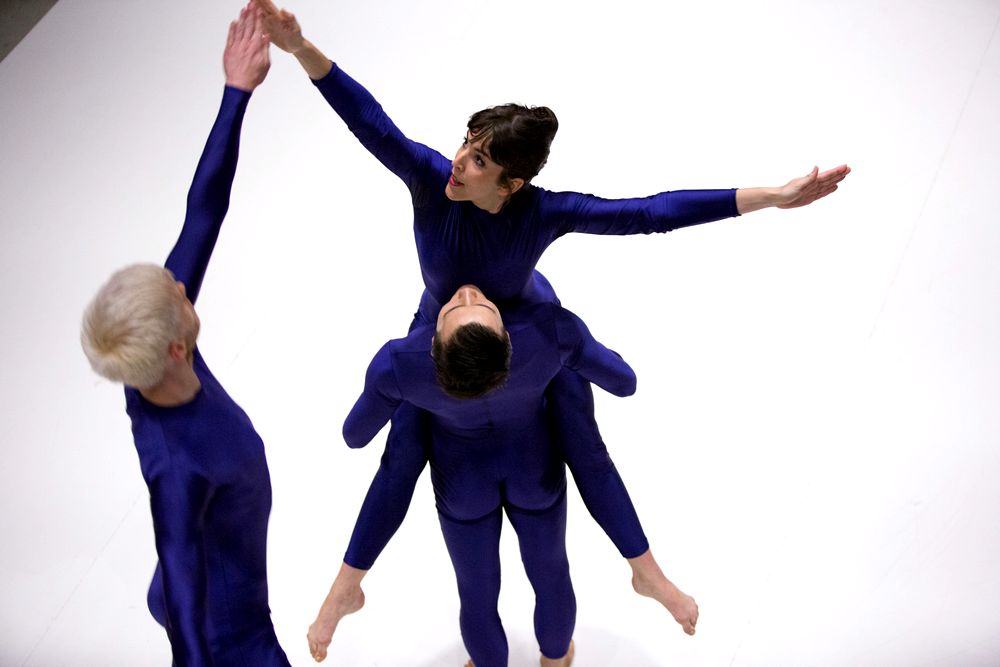
© Sidd Khajuria 2013. Courtesy of Barbican Art Gallery. (Click image for larger version)
As Richard Alston explained after his company’s 37 minute performance, the element of chance, which Cunningham and Cage had taken from Duchamp’s experiments, could have been too risky for RADC’s dancers in a confined space. The order of the extracts Steele had chosen was decided in advance: choreography from Suite for Five (1956), Scramble (1967), Canfield (1969), Changing Steps (1973), Sounddance (1975) and Four Lifts (1987). The music, however, was unknown to the dancers, who had rehearsed in silence. Alston had selected four Cage recordings, edited to last the same (probable) duration as the dancing: in performance, the timings coincided exactly.
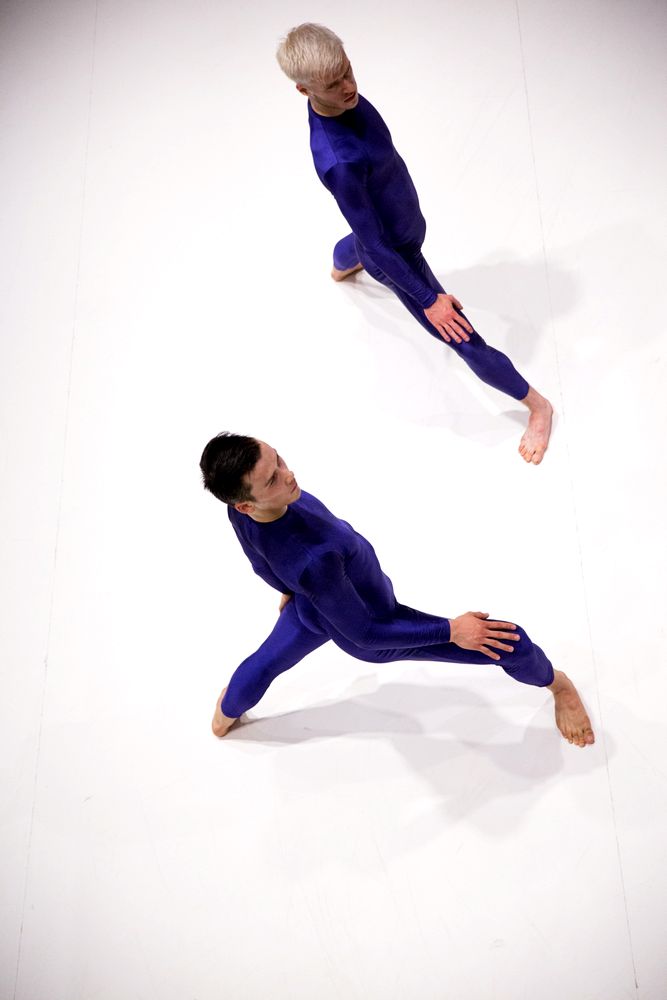
© Sidd Khajuria 2013. Courtesy of Barbican Art Gallery. (Click image for larger version)
Depending on where spectators were sitting or standing, the visual context included Rauschenberg’s setting for Cunningham’s Travelogue (1977) or Johns’s inflatable cubes for Walkaround Time (1968). The cubes use elements of Duchamp’s construction, The Bride Stripped Bare by her Bachelors, Even; Rauschenberg’s décor multiplies Duchamp’s bicycle wheel in between a row of chairs. Our proximity to the ten dancers, clad in purple bodytights, meant that we could see their conspiratorial smiles and glances, as well as hear their feet on the sounding-board stage. Their concentration was so intense that we could find ourselves caught up in their internal rhythms, undistracted by Cage’s quirky, baffling racket.
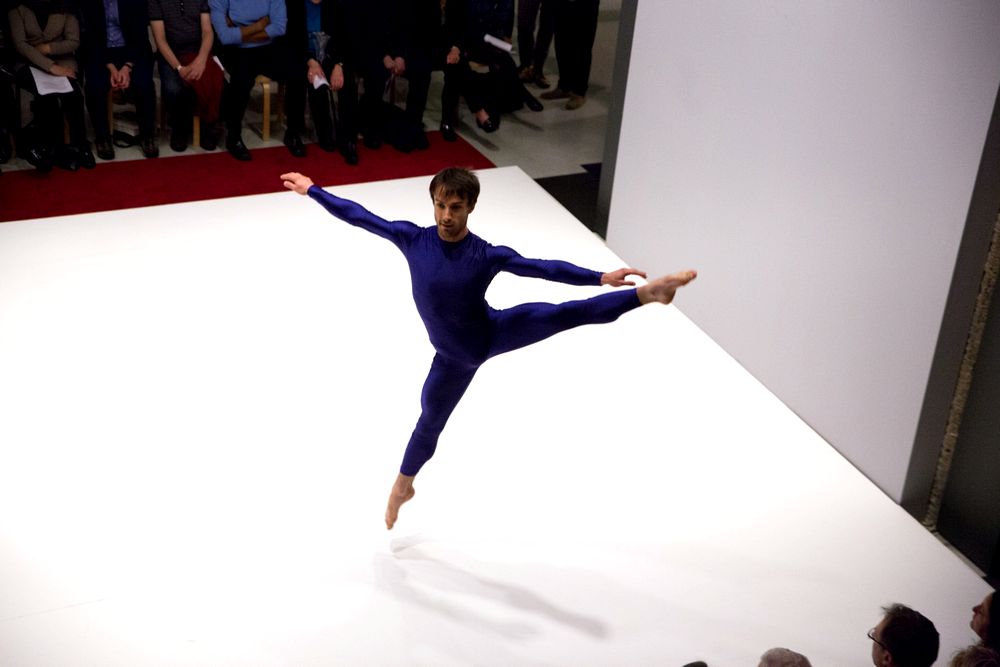
© Sidd Khajuria 2013. Courtesy of Barbican Art Gallery. (Click image for larger version)
The Event proceeded as a mosaic of solos, duets, trios, sextets and ensembles. Pierre Tapon performed Merce’s own solo from Suite for Five, featuring slow, low crouches on one leg. Its earthbound quality contrasted with the curving leaps in a solo James Pett danced from Scramble. Nathan Goodman was as taut as a coiled spring in a duet with coolly collected Nancy Nerantzi. In a comical trio, he bounded in two-footed frog jumps and tumbled in a swift somersault. Monique Smith-McDowell held some impressive balances, as did Hannah Kidd. In a delightful sequence from Changing Steps, three men lay face down, forming a star shape with three women seated on their backs. When the men rolled over, the women caressed the men’s cheeks before the dance continued, the same couples now upright.

© Sidd Khajuria 2013. Courtesy of Barbican Art Gallery. (Click image for larger version)
A lasting impression of the performance was, as ever, the range of Cunningham’s vocabulary, from shape-making to intricate steps, leaps, spins and lifts, constantly surprising. The RADC dancers coped well and cleanly, evidently enjoying the opportunity to celebrate Merce’s complexity and their company’s sense of community. Alston and Steele looked proud and pleased as they presented the dancers to the audience after the performance. What questioners most wanted to know was the effect of hearing the ‘music’ for the first time as they danced. ‘We didn’t hear it – we blocked it out’ was the answer. It’s a conundrum as fittingly perverse as Duchamp’s urinal-as-art at the entry to the exhibition.
NB Exhibition ends this Sunday 9 June












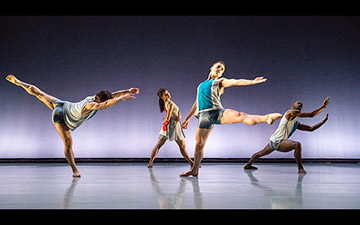




You must be logged in to post a comment.